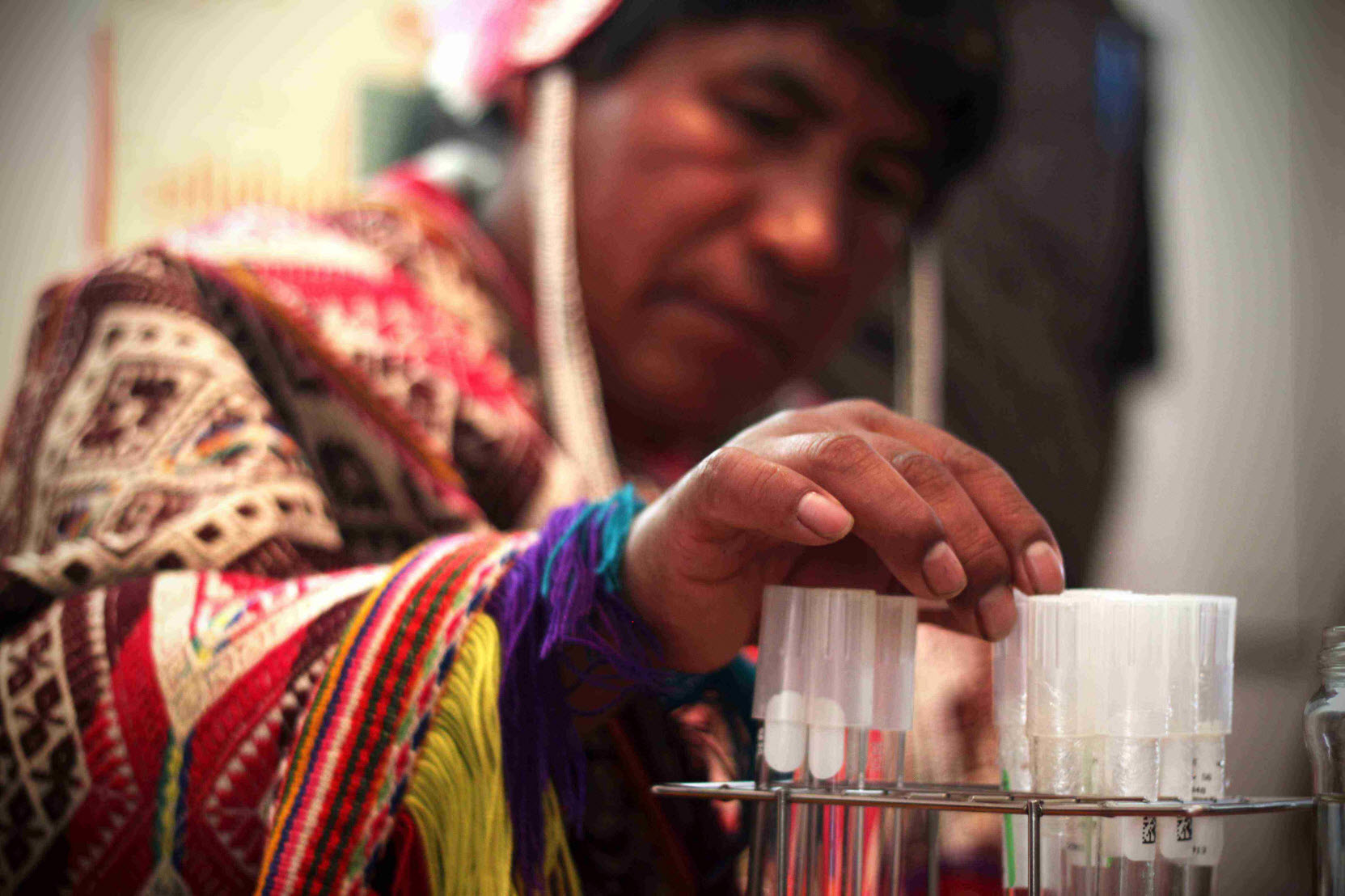In their efforts to conserve and understand native root and tuber biodiversity and tap its potential for improving the diets and incomes of people around the world, CIP researchers often record or rely on traditional knowledge. That information can enrich scientific research and enhance the effectiveness of development initiatives, but its use and diffusion is regulated by a growing body of international and national legislation, which must be taken into account and respected by the institution.
CIP scientists and administrators have consequently embarked on an effort to better understand the legal implications of CIP’s use of traditional knowledge, and to move toward a cohesive approach to handling it throughout the institution. An important step in that process was a round table discussion on Access and Documentation of Traditional Knowledge held at CIP headquarters in Lima, Peru on January 16.
The roundtable was organized by Selim Güvener, CIP’s Compliance & Intellectual Assets Manager. He explained that CIP needs to both address its responsibilities under international law governing traditional knowledge and comply with CGIAR Consortium demands that more information be shared with the general public. Whereas international law requires researchers to get the informed and prior consent of indigenous communities for the use or dissemination of their traditional knowledge, the CGIAR Consortium wants member research centers to institute an open access policy by 2018.
As Güvener observed: “How do we balance the obligation of making knowledge available when that knowledge belongs to communities?”
In examining this issue, CIP scientists have benefitted from the insight of Brendan Tobin, a lawyer and research fellow with Griffith University, in Australia. Tobin is undertaking a comparative study of the policies for handling traditional knowledge of institutions in various countries, and will write a briefing paper on the subject for CGIAR. He noted that while CIP researchers may have the best intentions in documenting traditional knowledge, once that information is published or otherwise disseminated, it could conceivably be used for commercial purposes that provide no benefit for the communities.
The International Convention on Biological Diversity calls for the benefits of genetic resources to be shared equitably with the ancestral custodians of those resources, and the Convention’s Nagoya Protocol, which came into force in October of 2014, provides a legal framework for the use of traditional knowledge associated with genetic resources. The protocol also requires due diligence in compliance with national legislation, and as Tobin pointed out, more than 100 countries now have laws protecting the rights of indigenous peoples.
CIP researchers who work with rural communities commonly sign agreements with them, but according to Güvener, those agreements may need a standardized language that reflects the implications of the upcoming open access policy. “When it comes to open access, CIP will need a filter for traditional knowledge that determines whether or not there is prior and informed consent for sharing it, and excludes information for which consent hasn’t been obtained,” he said.
“Communities may be willing to share some of their information via open access, but they will no doubt have some information that they don’t want to share,” said Tobin. “Before CIP can establish a policy for the management of traditional knowledge, you have to know how it is being handled now and then determine what changes can be made to comply with international law, without hindering CIP’s ability to do research.”

One of the round table participants was Severin Polreich, a scientist in the Genetic, Genomics and Crop Improvement Center of Excellence at CIP, which partners with communities in potato biodiversity hot spots to monitor potato landraces and document traditional knowledge related to their cultivation and use. He explained that before the program begins work in an area, community leaders discuss and sign an agreement that explains the research and defines the rules for CIPs access to and use of traditional knowledge. He added that he is unfamiliar with the agreements that other CIP researchers are using for their work with communities.
“If we can institutionalize this, it will contribute to our credibility,” Polreich said.
Güvener explained that the proceedings of the round table will be analyzed by CIP’s legal and research teams with the goal of establishing standardized best practices for balancing science needs, compliance with obligations and the rights of indigenous peoples.
